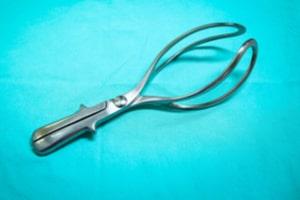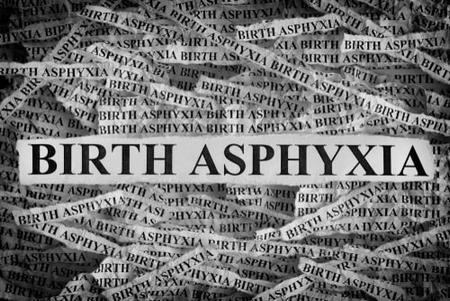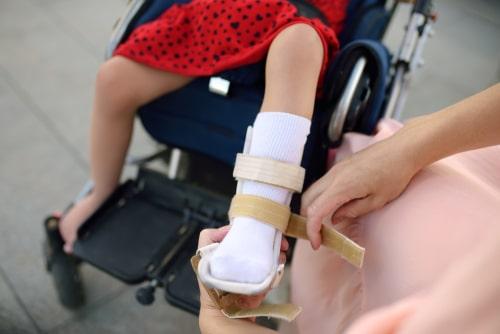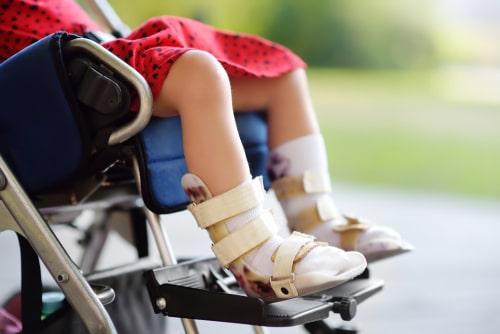Chicago, IL 60601
FREE CONSULTATIONS 312-462-4200
TOLL FREE 833-462-4200
Recent Blog Posts
Common Maternal Injuries Related to Forceps Assisted Births
 Childbirth is often a difficult process for both the mother and the child, especially when the child is having difficulty traveling through the birth canal. In these cases, a doctor may recommend the use of forceps to guide the baby’s head and assist with the delivery. However, an error in the use of forceps can cause serious injuries not only to the child, but to the mother as well. If you have been injured while giving birth to your child, you may have a claim for compensation based on medical negligence.
Childbirth is often a difficult process for both the mother and the child, especially when the child is having difficulty traveling through the birth canal. In these cases, a doctor may recommend the use of forceps to guide the baby’s head and assist with the delivery. However, an error in the use of forceps can cause serious injuries not only to the child, but to the mother as well. If you have been injured while giving birth to your child, you may have a claim for compensation based on medical negligence.
Maternal Injuries From Forceps Use
The use of forceps during childbirth is a very delicate procedure, and even a minor error could have serious consequences. Some possible maternal injuries and health complications related to forceps use include:
-
Lacerations and tears - Forceps can cause cuts or tears in the tissue of the vagina, the anus, or the perineum (the area in between). This can lead to scarring or excessive bleeding that may prove fatal.
Common Forms of Upper Body and Head Trauma During the Birthing Process
 Many birth injuries to infants are related to complications with prolonged or induced labor, health complications with the mother, or the child’s lack of oxygen. However, some injuries are the result of direct physical trauma to the child during extraction.
Many birth injuries to infants are related to complications with prolonged or induced labor, health complications with the mother, or the child’s lack of oxygen. However, some injuries are the result of direct physical trauma to the child during extraction.
These injuries commonly affect a child’s head, neck, spine, and upper body, and they tend to be more common when doctors use vacuum extraction or forceps to assist with the delivery. If your child has suffered one of the following traumatic injuries, the Birth Injury Law Alliance can help you determine how to proceed.
Birth Injuries to the Head and Upper Body
All of the following injuries can occur due to trauma during childbirth:
- Skull fractures - Minor skull fractures often heal without complications. However, more serious fractures, including depressed fractures that compress the brain, can lead to brain damage and long-term health conditions.
What Are the Possible Effects of Birth Asphyxia?
 Childbirth is a complicated process with many possible dangers for both the child and the mother. A serious problem that some newborns experience is birth asphyxia, a condition in which the infant cannot obtain sufficient oxygen during or after birth. Birth asphyxia can have many different causes, including problems with the placenta or umbilical cord, or complications with prolonged labor. If asphyxia affects your child, it is important to understand what this could mean for their health in both the short and long term.
Childbirth is a complicated process with many possible dangers for both the child and the mother. A serious problem that some newborns experience is birth asphyxia, a condition in which the infant cannot obtain sufficient oxygen during or after birth. Birth asphyxia can have many different causes, including problems with the placenta or umbilical cord, or complications with prolonged labor. If asphyxia affects your child, it is important to understand what this could mean for their health in both the short and long term.
Short-Term Symptoms and Effects
When a child is born, doctors use what is known as an Apgar score to gauge the baby’s health. To determine this score, doctors look for several indicators, including the child’s appearance, heart rate, reflexes, muscle activity, and breathing. Asphyxia can affect almost all of these indicators. For example, an infant who suffers from asphyxia often has discolored skin, a low pulse, and difficulty breathing. In most cases, doctors can recognize the symptoms of asphyxia and take action to address it as quickly as possible.
What Birth Injuries Could Be Caused by Inducing Labor?
 Timing is a critical issue in a baby’s birth. When labor is not progressing normally, doctors may need to induce or speed up labor using various medical techniques. Unfortunately, labor induction is not without its risks. Mothers and babies can suffer birth injuries when labor is not induced properly, labor is prolonged, or the doctors fail to recognize the need for an emergency C-section.
Timing is a critical issue in a baby’s birth. When labor is not progressing normally, doctors may need to induce or speed up labor using various medical techniques. Unfortunately, labor induction is not without its risks. Mothers and babies can suffer birth injuries when labor is not induced properly, labor is prolonged, or the doctors fail to recognize the need for an emergency C-section.
Why Would a Doctor Induce Labor?
Labor induction involves various methods that stimulate uterine contractions and speed up the birth of a baby. A doctor might recommend labor induction when a pregnant woman is more than two weeks overdue, or medical concerns make induction the safest choice. Placental abruption, gestational diabetes, infections, and pre-labor rupture of membranes may all cause a doctor to recommend labor induction. Doctors have a legal “duty of care” to provide reasonably skillful medical care to patients. This includes thoroughly assessing the situation and determining what course of action is in the mother and baby’s best interests. If the risks associated with labor induction are lower than the risks of continuing without inducing labor, the doctor will suggest labor induction.
Can I Get Social Security Benefits for My Child With CP?
 As a parent, your child’s cerebral palsy (CP) diagnosis can be cause for serious concern, both regarding their well-being and your ability to provide for the costs of their treatment and care. If the condition was caused by a birth injury related to medical negligence, you may be able to recover compensation from the parties at fault. However, given the immediacy of your child’s needs and the sheer magnitude of the expenses you are likely to face over time, it is understandable that you would look to other sources of financial assistance. One possible source of help for some parents is Social Security benefits.
As a parent, your child’s cerebral palsy (CP) diagnosis can be cause for serious concern, both regarding their well-being and your ability to provide for the costs of their treatment and care. If the condition was caused by a birth injury related to medical negligence, you may be able to recover compensation from the parties at fault. However, given the immediacy of your child’s needs and the sheer magnitude of the expenses you are likely to face over time, it is understandable that you would look to other sources of financial assistance. One possible source of help for some parents is Social Security benefits.
Supplemental Security Income for Children With Cerebral Palsy
The U.S. Social Security Administration (SSA) offers disability benefits through a couple of different programs. The program that most often helps families of children with CP is Supplemental Security Income (SSI). For a child to be eligible for SSI, they must have a qualifying disability and limited financial resources.
How Can Limb-Lengthening Surgery Help Children with Cerebral Palsy?
 Cerebral palsy can have a profound impact on a child’s growth and development. As a parent of a child with cerebral palsy, you are probably constantly looking into ways to improve your child’s quality of life. Although surgery is often considered a last resort, several surgical procedures have been shown to improve mobility, pain, and overall functioning in children with cerebral palsy. Limb-lengthening or leg-lengthening surgery is an orthopedic surgery that corrects leg abnormalities or length discrepancies. This procedure may help a child with cerebral palsy with walking and movement, but the procedure is also associated with several risks.
Cerebral palsy can have a profound impact on a child’s growth and development. As a parent of a child with cerebral palsy, you are probably constantly looking into ways to improve your child’s quality of life. Although surgery is often considered a last resort, several surgical procedures have been shown to improve mobility, pain, and overall functioning in children with cerebral palsy. Limb-lengthening or leg-lengthening surgery is an orthopedic surgery that corrects leg abnormalities or length discrepancies. This procedure may help a child with cerebral palsy with walking and movement, but the procedure is also associated with several risks.
How Does Leg-Lengthening Work?
Many children with cerebral palsy have legs that are different lengths. This can make walking very difficult and painful. Leg-lengthening surgery involves cutting the leg bone and allowing the body to form new bone so that the leg is longer than it was before the surgery. This is typically accomplished by inserting a metal device inside of the leg that slowly increases the space between the leg bones that were surgically separated. The body will then naturally fill in the space with bone over time.
Does CBD Oil Alleviate Cerebral Palsy Symptoms in Children?
 Public opinion about cannabis products has changed dramatically in the last several decades. More and more people are using products like cannabidiol, or CBD, to treat everything from chronic pain to seizures. If you are a parent of a child with cerebral palsy, you may watch your child struggle with muscle pain and stiffness, reduced mobility, involuntary movements, and a host of other symptoms. Some parents have found that CBD oil is an effective treatment option for children with cerebral palsy, however, there is still controversy and uncertainty surrounding cannabidiol.
Public opinion about cannabis products has changed dramatically in the last several decades. More and more people are using products like cannabidiol, or CBD, to treat everything from chronic pain to seizures. If you are a parent of a child with cerebral palsy, you may watch your child struggle with muscle pain and stiffness, reduced mobility, involuntary movements, and a host of other symptoms. Some parents have found that CBD oil is an effective treatment option for children with cerebral palsy, however, there is still controversy and uncertainty surrounding cannabidiol.
What is CBD Oil?
While CBD oil is derived from cannabis, CBD oil is not the same thing as marijuana. Cannabidiol is one of the non-psychoactive active ingredients in the hemp plant. This means that users do not feel a “high” when they consume products containing only CBD. The World Health Organization reports that the substance “exhibits no effects indicative of any abuse or dependence potential” and most medical experts do not consider the product to be dangerous. However, the effectiveness of CBD oil has been called into question.
What Types of Alternative Therapies Could Help a Child With Cerebral Palsy?
 Cerebral palsy can lead to life-altering symptoms. A child with cerebral palsy may have difficulty eating and speaking, walking, and using his or her muscles to complete everyday tasks. He or she may be afflicted with involuntary movements and muscle rigidity. Some cerebral palsy sufferers also experience intellectual disabilities and problems with learning and development. If your child has cerebral palsy, you may be interested in alternatives to traditional medical interventions.
Cerebral palsy can lead to life-altering symptoms. A child with cerebral palsy may have difficulty eating and speaking, walking, and using his or her muscles to complete everyday tasks. He or she may be afflicted with involuntary movements and muscle rigidity. Some cerebral palsy sufferers also experience intellectual disabilities and problems with learning and development. If your child has cerebral palsy, you may be interested in alternatives to traditional medical interventions.
Complementary and Alternative Medicine for Children with Cerebral Palsy
There is still much that we do not know about alternative treatment for cerebral palsy sufferers. Some families find that alternative therapy reduces their child’s CP symptoms and increases his or her quality of life. However, others do not find the treatments to be effective.
If you have a child with cerebral palsy, you may want to ask your child’s doctor about exploring alternative therapies such as:
Preventable Birth Injuries May Result from a Doctor’s Mishandling of a Breech Birth
 Ideally, a baby is born head-first. This ensures that the child can breathe as soon as his or her head clears the birth canal. A baby that is positioned incorrectly within the mother’s body during labor and delivery may suffer life-threatening birth injuries. Doctors may need to take corrective actions to reposition the baby or deliver the baby through Cesarean section (C-section.) If a doctor fails to handle a breech birth correctly, the baby may suffer serious or even fatal injuries.
Ideally, a baby is born head-first. This ensures that the child can breathe as soon as his or her head clears the birth canal. A baby that is positioned incorrectly within the mother’s body during labor and delivery may suffer life-threatening birth injuries. Doctors may need to take corrective actions to reposition the baby or deliver the baby through Cesarean section (C-section.) If a doctor fails to handle a breech birth correctly, the baby may suffer serious or even fatal injuries.
Potential Remedies for a Baby in Breech Presentation
When a baby is in breech presentation, doctors have several choices. In some cases, the doctor may be able to manually reposition the baby so that the mother can continue with a vaginal delivery. External cephalic version (ECV) is a process during which a doctor pushes on the outside of the woman’s abdomen in order to manually reposition the baby. However, this procedure is not safe in situations involving multiples, rupture of the amniotic sac, abnormal fetal heart rate, low amniotic fluid levels, or vaginal bleeding.
What Types of Surgical Interventions May Benefit a Child with Cerebral Palsy?
 Cerebral palsy is a life-changing medical condition that can affect everything from walking and eating to cognition and learning abilities. If you have a child with cerebral palsy, you know just how far-reaching the illness's effects can be. Fortunately, doctors and researchers are learning more and more about cerebral palsy every day. Many medical interventions, including several surgical procedures, may improve the quality of cerebral palsy sufferers' lives.
Cerebral palsy is a life-changing medical condition that can affect everything from walking and eating to cognition and learning abilities. If you have a child with cerebral palsy, you know just how far-reaching the illness's effects can be. Fortunately, doctors and researchers are learning more and more about cerebral palsy every day. Many medical interventions, including several surgical procedures, may improve the quality of cerebral palsy sufferers' lives.
Orthopedic Surgery for Children with Cerebral Palsy
Cerebral palsy can lead to rigid muscles, uncontrollable muscle movement, and difficulty with everyday tasks like using a pencil or showering. Children with cerebral palsy may struggle to gain the independence they crave because of their lack of muscle control. Orthopedic surgery has proven to be one method of improving functionality. As a parent, the thought of your child going under the knife may understandably be unnerving. Most parents try various other treatment options such as physical therapy and muscle injections before trying surgery. Unfortunately, these treatments do not always result in the relief doctors hope for.





